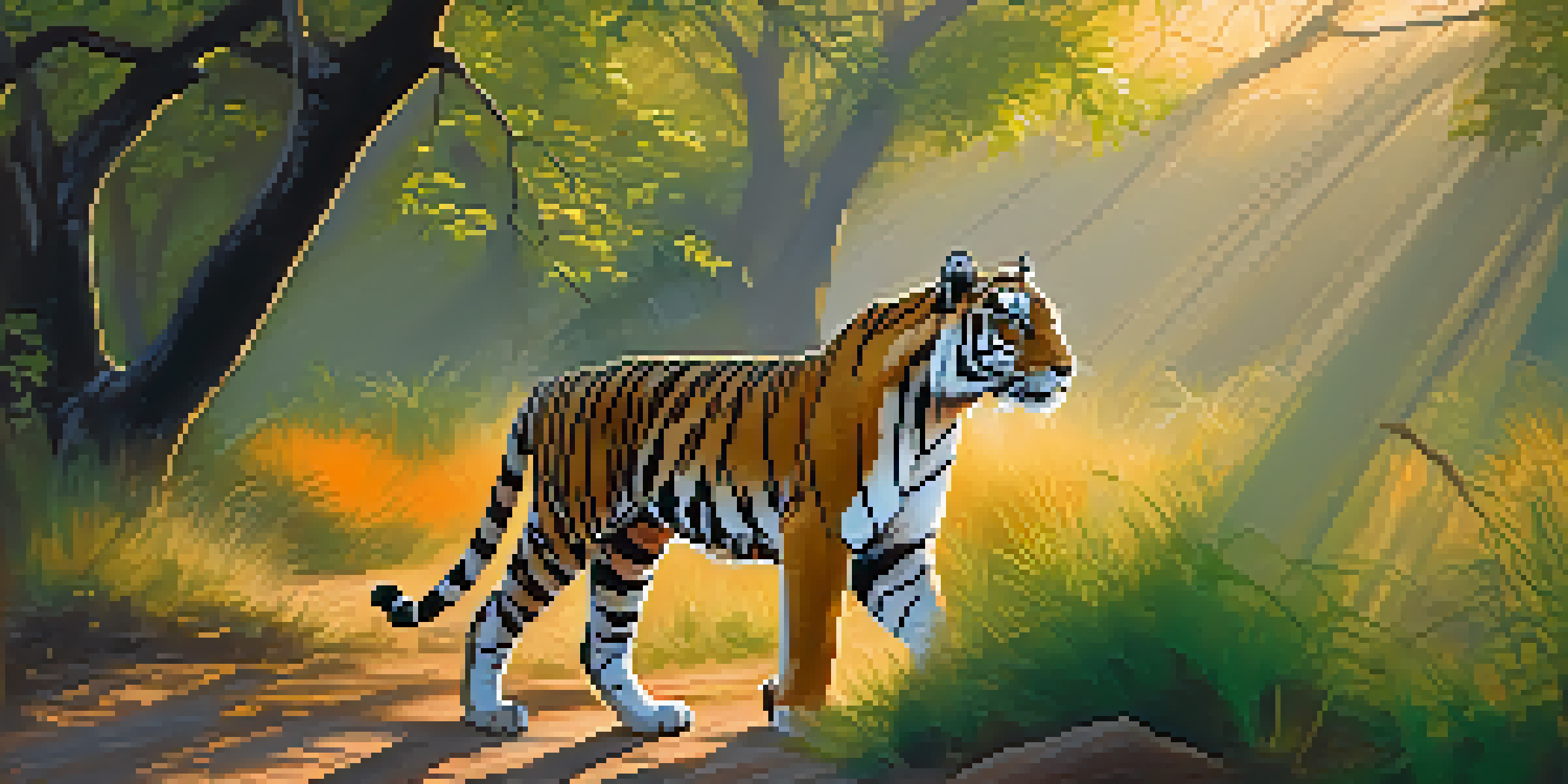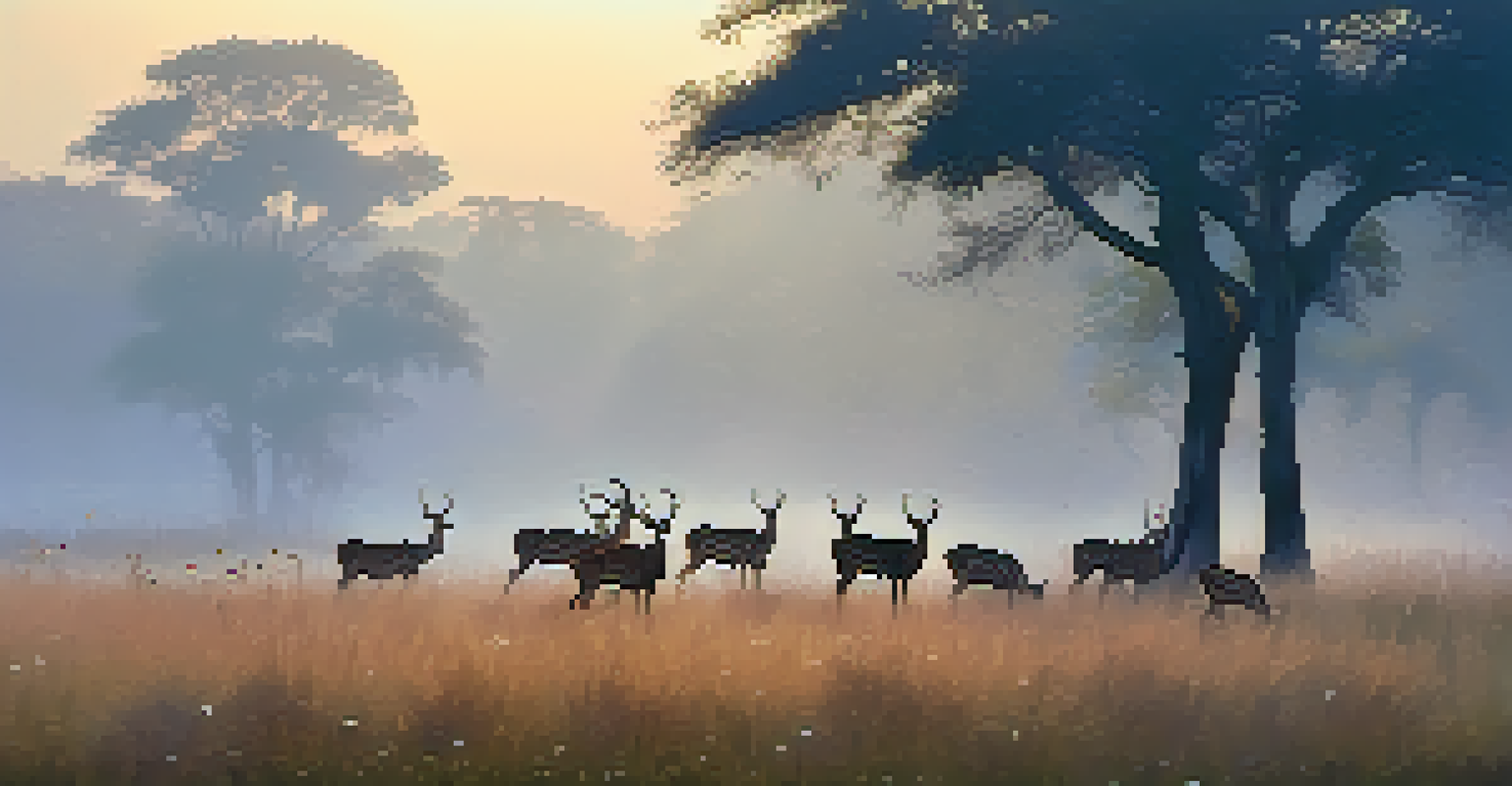Wildlife Photography Tours in India's National Parks

Introduction to Wildlife Photography Tours in India
Wildlife photography tours in India offer a unique opportunity to capture the stunning beauty of nature. From majestic tigers to vibrant birds, each national park showcases a variety of wildlife that photographers dream of. These tours are designed not just for seasoned photographers but for anyone looking to immerse themselves in the wilderness and create lasting memories.
In every walk with nature one receives far more than he seeks.
The allure of India’s national parks lies in their diversity, both in flora and fauna. Parks like Ranthambore, Kanha, and Bandhavgarh are renowned for their rich ecosystems and abundant wildlife. Joining a guided tour not only enhances your chances of capturing that perfect shot but also provides insights into the habits and habitats of the animals you encounter.
As you venture into these breathtaking landscapes, you'll find yourself surrounded by the sounds of nature and the thrill of wildlife sightings. Whether it's the roar of a tiger or the call of an exotic bird, each moment offers an element of surprise that makes wildlife photography tours truly special.
Choosing the Right National Park for Your Tour
India is home to numerous national parks, each with its unique charm and wildlife. For instance, if your goal is to photograph the elusive Bengal tiger, Ranthambore National Park is a top choice. This park not only boasts a healthy tiger population but also offers stunning landscapes that provide perfect backdrops for photography.

On the other hand, if you’re interested in birdwatching, Bharatpur Bird Sanctuary is a paradise with over 370 species of birds. The vibrant colors and diverse species will keep your camera busy while you learn about their behavior and habitats. Each park has its best season to visit, so planning ahead is essential to maximize your experience.
Explore Diverse National Parks
India's national parks, like Ranthambore and Bharatpur, offer unique wildlife experiences tailored to your photography interests.
Ultimately, selecting the right national park will depend on your interests and the kind of wildlife you wish to photograph. Researching each park’s specialties can help you choose a tour that aligns perfectly with your photography goals.
What to Expect on a Wildlife Photography Tour
A typical wildlife photography tour includes early morning and late afternoon safaris when animals are most active. These guided excursions are not just about finding animals; they also teach you about their behavior and ecosystem. You'll have the chance to learn from experts who know the best spots and times for capturing stunning images.
The earth has music for those who listen.
Aside from safaris, many tours offer workshops on photography techniques tailored for wildlife. Whether you’re a beginner or an advanced photographer, these sessions can help you improve your skills and learn how to adapt your techniques to different lighting conditions and animal movements. It's about making every shot count.
Moreover, these tours often emphasize eco-friendly practices, ensuring that wildlife is respected and protected during your visit. You'll not only leave with beautiful photographs but also a deeper understanding of conservation efforts and the importance of protecting these magnificent creatures and their habitats.
Essential Gear for Wildlife Photography
When preparing for a wildlife photography tour, having the right gear is crucial. A camera with a good zoom lens is essential for capturing subjects from a distance without disturbing them. Lenses ranging from 200mm to 600mm are often recommended to get those close-up shots of animals in their natural habitat.
In addition to your camera, don’t forget to pack extra batteries and memory cards, as you’ll likely be taking many photos throughout the day. A sturdy tripod or monopod can also be beneficial for stability, especially in low light situations. Clothing suited for the environment, like neutral colors, is equally important to blend in with nature.
Essential Gear for Success
Having the right equipment, including a good zoom lens and extra batteries, is crucial for capturing stunning wildlife images.
Lastly, consider bringing binoculars for a closer view of wildlife that's too far for your camera. These tools will enhance your experience, allowing you to appreciate the beauty of animals even when you can't capture them on film.
Best Times to Visit India's National Parks
Timing your wildlife photography tour is key to a successful experience. The best months typically fall between October and March when the weather is cooler and animals are more active. This period also coincides with the dry season, making it easier to spot wildlife as they gather around water sources.
Each national park has its peak season, so it’s essential to do your research. For example, Ranthambore is best visited from November to March, while Kanha and Bandhavgarh are ideal from December to April. Visiting during these months increases your chances of witnessing and photographing diverse wildlife.
Additionally, consider the time of day you plan to photograph. Early mornings and late afternoons provide the best light for photography, enhancing colors and reducing harsh shadows. Planning your safaris during these times can significantly improve the quality of your images.
Capturing the Perfect Wildlife Shot
Getting that perfect wildlife shot often requires patience and a bit of luck. One of the most important tips is to stay quiet and still, as sudden movements can scare animals away. Observing their behavior and waiting for the right moment can lead to incredible, candid shots that showcase wildlife in its natural environment.
Understanding the animal's patterns can also give you an edge. For instance, knowing when a tiger is likely to emerge from the bush can help you position yourself for the best shot. This kind of knowledge often comes from your guides, who have spent years observing these creatures.
Timing Enhances Wildlife Sightings
Visiting during the cooler months and planning safaris for early mornings or late afternoons increases your chances of remarkable wildlife photography.
Lastly, don’t forget to enjoy the moment! While capturing stunning photographs is a goal, the experience of being in the wild and observing animals is equally valuable. Sometimes, the memories you create will be just as rewarding as the pictures you take.
Conservation and Responsible Photography Practices
As wildlife photographers, it’s essential to promote conservation and responsible practices during your tours. Respecting wildlife and their habitats should always be a priority. This means keeping a safe distance from animals and not disturbing their natural behaviors, ensuring their well-being.
Many tour operators emphasize eco-friendly practices, educating participants about the importance of conservation. By participating in these tours, you not only get to capture incredible images but also contribute to awareness and conservation efforts. Engaging with guides who are passionate about wildlife can enhance your understanding of these critical issues.

Ultimately, your actions can have a lasting impact on wildlife preservation. By advocating for responsible photography, you can help ensure that future generations will also have the chance to experience the beauty of India’s national parks.